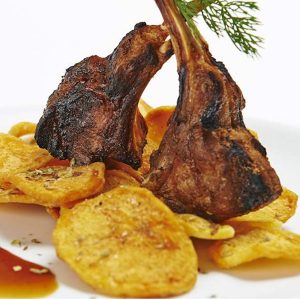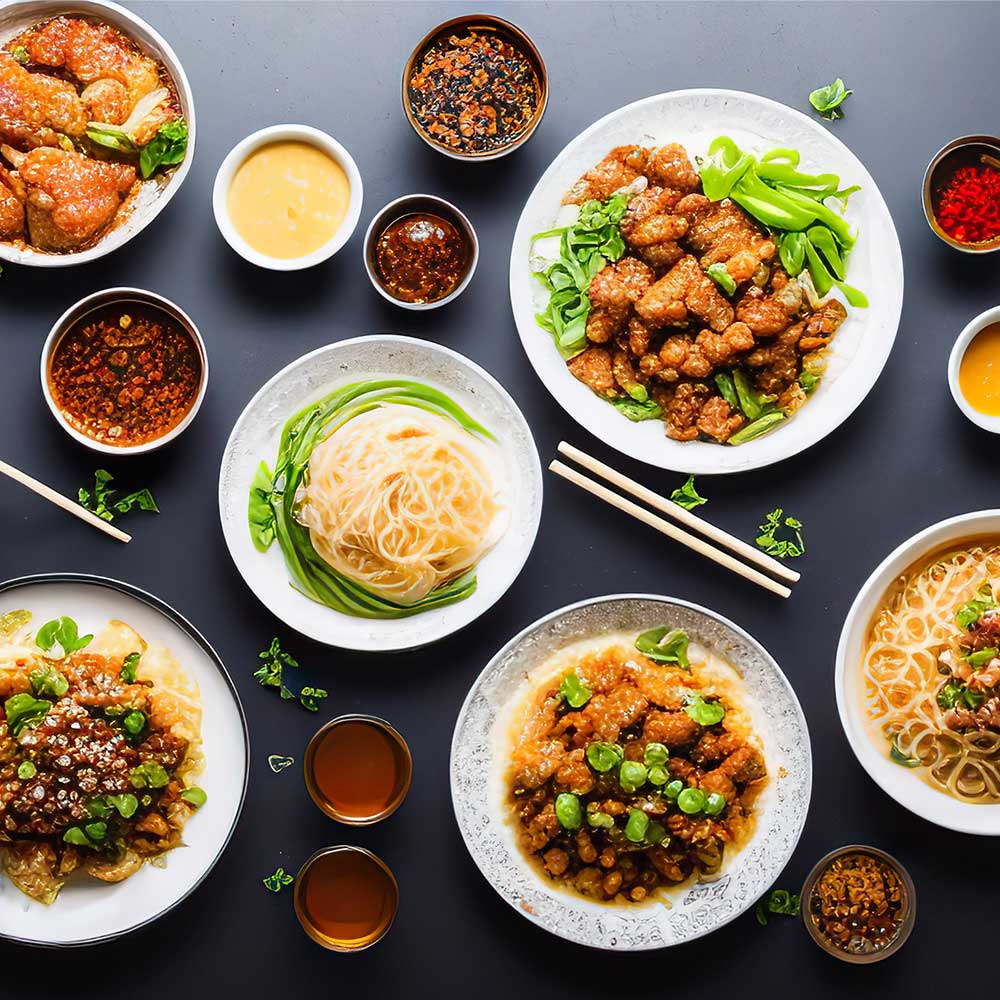Karē
Japanese-style curry known as karē is one of the most popular dishes in the country. It started gaining popularity in Japan during the Meiji period (1868-1912), when the British introduced it to the country. During its early years, karē with rice was an expensive, gourmet dish reserved only for the wealthy.
Compared to Indian curries, karē is less spicy, sweeter, darker, and usually thicker, which is thanks to the addition of flour or roux. There are three main version of karē in Japan – karē raisu (curry over rice), karē udon (curry over noodles), and karē -pan (a pastry filled with curry).
The most popular variety, is, as expected, karē raisu, which is usually served with fukujinzuke pickles or Japanese scallions on the side. Today, karē is so popular in Japan that it can be called a true national dish.
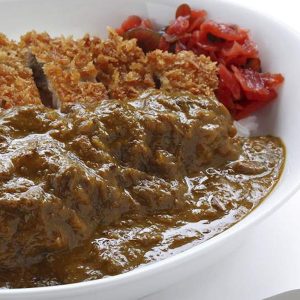
Picanha
Picanha is a fresh cut of beef that’s especially popular and highly prized in Brazil. In the US, it’s called sirloin cap, and in the UK, it’s known as the rump cap. Picanha is situated on the back side of the animal, above the butt, where it sits on a fat cap.
It’s mostly used for churrasco – the meat is first grilled, then sliced off of a skewer. This cut holds very little fat in the meat, so it must be cooked perfectly in order not to make it tough. In Brazil, every churrasco has picanha, and all of the best churrascarias feature picanha on their menus.
The name picanha is derived from the word picana, referring to the ranchers’ pole used for herding cattle in Portugal and Spain. The technique was brought over to Brazil where the word picanha was used to refer to the part of the cow that was poked by ranchers with the pole.
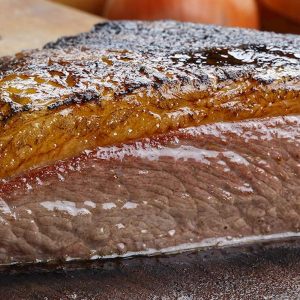
Amêijoas à Bulhão Pato
Named after the 19th-century poet Raimundo António de Bulhão Pato, this simple Portuguese dish combines clams and a flavorful sauce that is based on olive oil, garlic, lemon juice, white wine, and fresh cilantro. Bulhão Pato clams are typically enjoyed as an appetizer and are usually served with bread on the side.
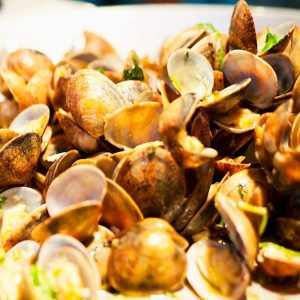
Tangbao
The name tangbao or tangbaozi refers to a broad group of steamed Chinese soup-filled dumplings. Depending on the origin, dumplings can be made with leavened or plain dumpling dough which is usually wrapped around a gelatinous filling, twisted and sealed at the top, and then steamed.
While they steam, the firm filling (usually made with minced pork or crab meat) transforms into a flavorful soup, which stays safely secured inside the bun. Due to the nature of this Chinese delicacy, they are always served immediately after steaming, so the soup stays liquid and hot.
Because of the sizzling filling, tangbao buns should be consumed with precaution and usually employ a unique eating technique. Chopsticks are used to hold the bun at the top, and a small bit is taken from the side, allowing the soup to pour into the wide spoon held underneath.
The soup and the dumpling are usually eaten alternatively, but can also be enjoyed one at the time. One of the most common varieties of the dish includes the tangbao dumplings originating from the Jiangsu province, which are usually large in form and often come with a straw tucked inside the bun, which is used to slurp the delicious soup. Xiaolongbao, the authentic Shanghai version, is famous for its small size and slightly thinner dough.
All the varieties found in China and in Chinese restaurants around the world are typically served as a snack, as a part of dim sum meals, or as a satisfying appetizer.
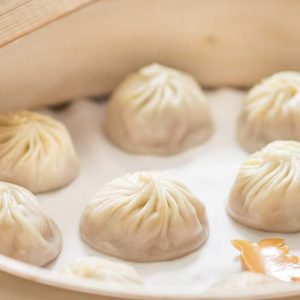
Guotie
The pan-fried variety of the Chinese jiaozi dumpling, known as guotie, is a Northern Chinese dumpling typically filled with minced pork, Chinese cabbage, scallions, ginger, rice wine, and sesame seed oil.
Crunchy and soft textures are achieved by a special method of preparing; while the bottom of the dumpling is frying, a small amount of liquid is added to the pan which is then covered, thus allowing the rest of the dumpling and the filling to steam.
When it comes to the shape, guotie should always be long and straight as it can stand more easily and it does not fall over during cooking. Goutie can be literally translated as pot sticks, so these dumplings are often nicknamed potstickers, especially in North America.
Although the first-known mention of goutie dates back to the Song Dynasty, today they are a popular street food, often eaten as a snack or an appetizer, typically accompanied by a dipping sauce.
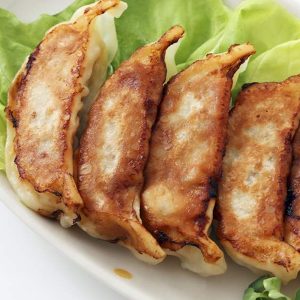
Phanaeng Curry
Phanaeng curry is a variety of Thai curry that is characterized by its thick texture and a salty-sweet peanut flavor. It consists of meat that is stewed with dried chilis, kaffir lime leaves, coconut milk, cilantro, cumin, garlic, lemongrass, shallots, and peanuts.
The meat used in phanaeng curry is usually beef, chicken, or duck, and the dish traditionally does not include any vegetables. The name of the dish is derived from the word panang, meaning cross, which refers to the ancient way of preparing chicken with its legs crossed and set in an upright position.
Though the origins of phanaeng curry are somewhat murky, it is often associated with the Malaysian state of Penang, but there is little evidence to support this claim. However, the earliest known recipe is found in Maawm Sohm Jeen’s book Tam Raa Gap Khao, dating back to 1890.

Mixed Ceviche (Ceviche mixto)
Ceviche mixto is a classic Peruvian appetizer that differentiates itself from other types of ceviche by the addition of various seafood ingredients to regularly used fish. Those include shrimp, squid, octopus, clams, or scallops. A few mussels or small crabs are sometimes also added to the dish.
The seafood is typically marinated in lemon juice, lime juice, celery juice, salt, onions, cilantro, and hot chili peppers. Ceviche mixto is often served with glazed sweet potatoes and Peruvian corn.
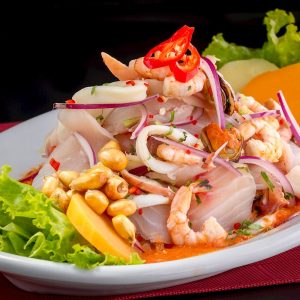
Ghormeh sabzi
Ghormeh sabzi is an Iranian herb stew, commonly eaten everywhere in Iran and considered to be the national dish of the country. Although there are numerous ways to prepare the dish, the essential ingredient is a combination of fried herbs, usually made with chopped parsley, cilantro, and chives.
Other varieties occasionally include greens such as leeks, kale, or spinach, which give the dish its dark green color and rich, pungent flavors. These essential ingredients are incorporated with kidney beans and cubed meat (most commonly lamb) to create a rich and dense stew.
The dish is traditionally served in a bowl. Traditional Persian rice, known as polo, is usually served alongside ghormeh sabzi. The rice is boiled and steamed, resulting in an incredibly soft and mild side dish, and a perfect complement to this flavorful stew.
Even though it is considered a traditional Iranian dish, ghormeh sabzi is also commonly eaten in the neighboring Azerbaijan.
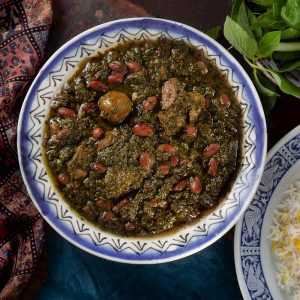
Cağ kebabı
Cağ kebabı is a kebab variety originating from the Turkish city of Erzurum. It is made with lamb that is marinated with onions, salt, and pepper for about 12 hours, and the meat is then placed on a big horizontal skewer and cooked over a wood fire.
The usta (master of his trade) will take a long skewer and slice off tender and succulent pieces of lamb until the skewer is full. The dish is traditionally consumed either straight from the skewer, or with the meat wrapped in warm, freshly baked lavash flatbread.
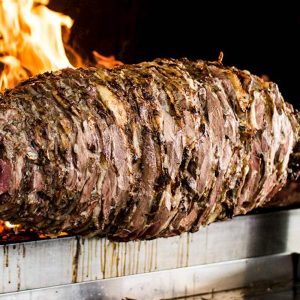
Pollo a la brasa
Pollo a la brasa is a popular Peruvian dish consisting of crunchy and juicy charcoal-grilled chicken that is traditionally served with French fries and salads. Today, it is one of the most consumed meals in Peru, so much that 27 million Peruvians eat it daily.
The dish was first invented in Lima in the 1950s, when it was seasoned only with salt, but nowadays the chicken is often marinated in a special combination of ingredients, usually consisting of vinegar, salt, pepper, rosemary, chili, and dark beer.

Pizza Margherita
Pizza Margherita is a delicacy that is literally fit for a queen. In 1889, Queen Margherita of Savoy visited Naples, where she was served a pizza that was made to resemble the colors of the Italian flag: red tomatoes, white mozzarella cheese, and green basil.
It was made by a chef named Raffaele Esposito of Pizzeria Brandi, who is credited for its invention. The Queen loved the dish, and Esposito named it after her – pizza Margherita, but such a pizza was also made before that time, and can be dated back to at least 1866, when the most popular pizza toppings included basil, cheese, and tomatoes, but the pizza was not yet named Margherita.
Since those times, Margherita has become one of the most popular pizza varieties in the world, and in 2009, it was protected as one of the three Pizze Napoletane with an STG European label of protection, proving its excellence in flavor, ingredients, and traditional pizza-making techniques.

Xiaolongbao
Xiaolongbao are soup-filled dumplings originating from the 19th-century Nan Xiang, what is today Shanghai’s Jiading district. It is believed that the first form of xiaolongbao was sold by Huang Mingxian, a shop owner who wanted to evolve the classic dumpling due to the increased competition of neighboring vendors.
The dumplings are usually filled with a large volume of soup and minced pork, then steamed in a specially-designed bamboo steamer. Sometimes, xiaolongbao can also be filled with crab or shrimp meat. The dough is quite thin, and it is believed that it should be thicker than tang bao, but not as thick as shen jian bao.
It is recommended to serve xiaolongbao dumplings while they are still hot, preferably with a vinegar and ginger dip on the side.
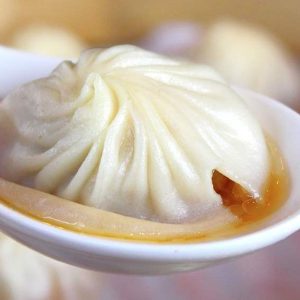
Gambas al ajillo
Gambas al ajillo is a popular Spanish appetizer consisting of shrimps that are sautéed in a pan with minced garlic, lemon juice, paprika, and olive oil. The dish is usually consumed as a tapa. It is recommended to garnish gambas al ajillo with chopped parsley and pair it with some crusty bread on the side, which is useful for mopping up the flavorful sauce.
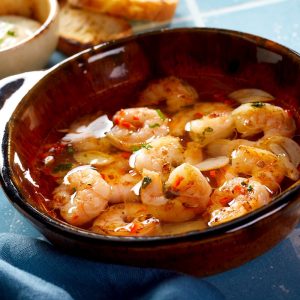
Shish kebab
Shish is the most famous kebab variety consisting of pieces of meat on a skewer that is grilled over a fire. The dish originated with the nomadic tribes who used to marinate the meat in order to tenderize it and to get rid of the gamey flavors.
The marinades include any combination of lemon juice, olive oil, milk, yogurt, cinnamon, allspice, and various other spices. Authentic Turkish shish kebab is rarely prepared with vegetables on the same skewer, and it has been suggested by numerous food writers that grilling the vegetables and meat on a same skewer is a modern invention by Turkish restaurateurs to make the skewers look more visually appealing to customers.
The vegetables and meat should be grilled on separate skewers so that both are cooked for a proper period of time.
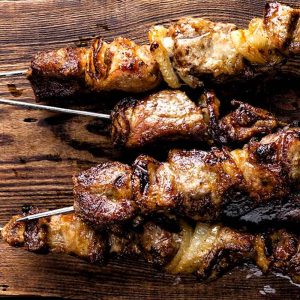
Païdakia
Grilled lamb chops are a traditional Greek dish that is popular throughout the country and usually enjoyed as the main course. Lamb chops are usually marinated in various combinations of olive oil, lemon juice, and a variety of fresh herbs before they are grilled on traditional charcoal barbecues.
They are commonly paired with potatoes, salads, or the creamy and refreshing tzatziki sauce.
